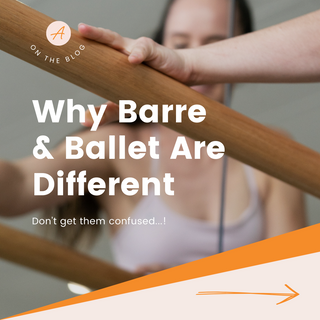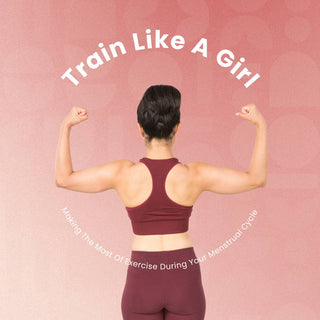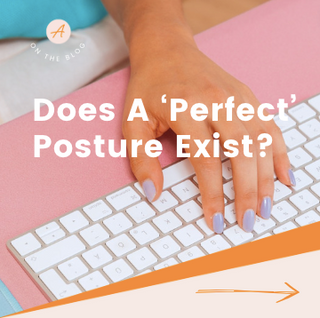Barre shares a common origin with ballet since both come from dance, leading them to have many similarities. While they may share the use of a barre and certain movements, they are fundamentally different activities with different goals and purposes. Barre is a low-impact fitness class that combines ballet-inspired movements with workout and rehabilitative principles, while ballet is an art form that focuses on performance and artistic expression, requiring years of training and practice to master. In this blog, we will explore the origins of both barre and ballet, the differences between them, and their unique benefits and appeal. Whether you are a fitness enthusiast or a dance lover, read on to discover more about these two forms of movement and why at the end of the day, you only have to be a ballerina to do one of them!
What is Barre?
The style that started it all here at Aleenta, Barre is a form of low-impact exercise that combines the movements of ballet with workout principles such as repetition and resistance. It’s super challenging while also remaining easy on the joints! Due to its name and use of ballet, it is easy to see why many get a barre workout confused with a ballet class. The reason barre has such strong ties to ballet is due to its invention by a ballet dancer!
Take yourself back to 1959: Lieselotte "Lotte" Berk, a London-based German-born ballet dancer, suffered a back injury and had to retire from her dance career. Whilst undergoing physiotherapy, she realised she could combine her dance technique with her rehabilitation, and the Lotte Berk Technique was born! Berk taught out of her basement, but this didn't stop her unique fitness classes from taking the world by storm: some of her most famous clients included Joan Collins and Barbra Streisand. Berk took several pupils under her wing, including her daughter Esther who still teaches to this day; in 1971, one of her students took the Berk method to New York City, and opened the first Barre studio in America. Gradually, more and more instructors began branching off from Berk's technique, creating their own methods fused with Pilates and Yoga, resulting in the modernised Barre we see today.
A typical barre workout starts with a warm-up, and then goes on to address the different major muscle groups such as the glutes and legs, arms and back, and of course, your core. Whilst many exercises rely solely on using your bodyweight, many barre classes also use equipment such as 1kg weights, resistance bands, Pilates balls. The level of cardio varies between our classes, with Barre.Blast having the most, but all barre workouts whether traditional or modern generally incorporate some sort of cardio flow.
Barre is ideal for anyone getting into fitness for the first time (or perhaps returning after a long hiatus) as it has elements of strength training and cardio all rolled into one, but without the gym bros or treadmills. Benefits of a barre workout include improved cardiovascular health, increased bone density, strength, and flexibility, as well as mental wellness. Due to its rehabilitative roots, barre also has a myriad of ways to modify, so if you are pregnant, post-natal, nursing injuries or chronic pain, there is always an alternative option for you in every exercise. It is suitable for people of all ages, genders and experience levels, making it the perfect, accessible workout!
What is Ballet?
Unlike barre, ballet is first and foremost an artform that requires great amounts of strength, flexibility, control and emotion to perform. It originated in the royal courts of Italy and France in the 15th century, and was popularised after the marriage of Catherine de Medici to Henry II. Initially a form of court entertainment, dancers wore elaborate costumes and performed intricate movements to music. One of the first documented ballets, Ballet comique de la reine (The Queen’s Comedic Ballet) was actually over 5 hours long! The performers at this time were predominantly men, and often nobles including Louis XIII. His son, Louis XIV went on to open the first ballet academy, the Académie Royale de Danse, in 1661. Ballet began to spread throughout Europe, with the first principal female dancers emerging in 1681, and eventually the rest of the world caught on. Over time, ballet evolved into a highly technical dance form that requires years of training and practice to master.

A typical ballet class begins at the barre, which is the name for the apparatus used to hold onto during warm-up exercises. Of course, this apparatus and name were both taken and adapted to barre workouts and are the main tie back to ballet, the artform. Barre exercises in a ballet class consist of pliés, tendus, rond de jambe, battements and more, and are the primary exercises that are mirrored in a barre workout. After this warm-up, dancers engage in centre work which incorporates more of the impressive movements you associate with ballerinas such as leg holds called “adage,” pirouettes and small jumps called “petit allegro.” After centre work, dancers move across the floor with greater movement such as large jumps (“grand allegro”), and more complicated, traveling turns. Depending on the type of ballet class, it may conclude with repertoire which is where dancers will practice set choreography, often from full-length ballets, and dance with each other. This is where the artistry of ballet plays an important part in class. Centre work, across the floor and repertoire make up 60-70% of a 90-120 minute ballet class, yet none of these elements are used in a barre workout! So you can see where the similarities quickly end.
Differences Between Barre and Ballet
Whilst some of the primary similarities and differences have already been touched upon, here’s the major elements setting barre and ballet apart:
-
Technique
Ballet is a highly technical dance form that requires years of training to master, whereas barre is a fitness class that incorporates ballet-inspired movements but does not need the same level of technical proficiency. Technique in a barre class goes as far as correct alignment to ensure you are working safely and not placing unnecessary stress on your joints whilst exercising. For example, it is common for beginners to ‘step’ into the turnout position often used in barre and ballet alike. After all, we’ve all seen professional dancers who can stand in 1st position with their feet laying completely flat at 180 degrees. But this places stress on your ankles and knees and is not a healthy way to work. To understand proper barre technique, including how to find your turnout correctly, check out our Top 5 Tips!
Other than proper alignment, there is no pressure in a barre class to have flat turnout or deep pliés. The emphasis here is to work within the comforts of your own body, not to learn how to extend them like a ballerina. In fact if turnout causes you discomfort in barre, your instructor will offer a parallel alternative, something you would never see in a ballet class.
-
Accessibility and Rehabilitation
It’s no secret that barre is often recommended to people recovering from injuries, experiencing chronic pain or health conditions, and of course, pregnancy. This is because barre takes only the low-impact elements of ballet and combines them with rehabilitative elements. You will rarely find yourself leaping your way through a barre workout, and any jumping is always optional. Your instructors have modifications on hand to work with people of all body types and abilities so you can exercise at your own pace. Ballet, however, is generally not an accessible space as it adheres to strict rules and choreography. If you have injuries holding you back from executing movement in its entirety, you’ll likely be sitting out class, and pregnant dancers usually take time off.

-
Focus
Ballet focuses on storytelling through movement and expression, while barre classes focus on building strength, toning muscles, and improving flexibility. Whilst ballet has many benefits from a fitness standpoint, there is a great emphasis on aesthetics; the higher your leg can go, the higher you can jump, the more you can turn, the better. Since the focus is on artistry and performance, these aesthetics are at the forefront of dancers goals’, rather than overall health. This makes ballet much higher-impact than a barre workout, as not only are ballerinas doing some incredible jumping, but the force their joints undergo, especially those en pointe, puts a lot more stress on their bones, ligaments and muscles. While there are ways to execute all of this healthily, it is not uncommon for dancers to require corrective surgeries, especially in their knees, to maintain the longevity of their careers.
A barre workout uses only the low-impact, warm-up elements of a ballet class, and combines these with rehabilitative emphases so that you can improve your overall fitness, not aesthetic. You can rest assured that at no point in a barre class will you be expected to smile gracefully like your glutes aren’t on fire!
-
Music and Rhythm
Ballet is typically performed to classical music, while barre classes may incorporate a variety of music genres. In fact, it would be less beneficial for your workout if you were to come to class with Chopin on the speaker! 😂Studies have shown that music with a high beat per minute (bpm) to match repetitive motions, as well as thematic ties to exercising, is the best to use when working out. We cover all the science behind music and exercise in this blog.
Additionally, there is no pressure to stick to the beat in barre class. Whilst moving in rhythm can be beneficial, if you need to take it slow, there’s no rush! We understand that the coordination of a barre class can be tricky to master and your instructor will work with you to ensure you are still getting the most out of your workout. In ballet, however, moving in time with the music is imperative!
-
Choreography
Ballet routines are often complex and choreographed to tell a story or convey an emotion, while barre classes use simple movements and repetition to create a challenging workout. Both do use choreography, but the latter focuses on targeting each muscle group and will move on to another exercise once you fatigue that area, lasting in total for 45-60 minutes. Ballerinas will be working their entire bodies for a 90-120 minute class, or an hours long performance, with little-to-no breaks!
-
Attire
Ballet dancers wear specific attire, including leotards, tights, and ballet shoes (as well as tutus at performance time!). In barre class, participants can wear any comfortable workout clothes and of course, grippy socks, which are required at Aleenta Health Club. Whilst we recommend tying your hair back, there is no set uniform for a barre workout, whereas ballerinas must sport a perfect bun every time!

These are just a few examples of the fundamental differences between barre and ballet. It's important to note that while they may share some similarities, they are ultimately different activities with different goals and purposes. Barre is accessible to people of all ages, genders, and experience levels, and can be modified to accommodate injuries, health conditions and pregnancy. It is a great way to improve cardiovascular health, increase bone density, strength, and flexibility, as well as mental wellness. On the other hand, ballet is a highly technical dance form that focuses on storytelling through movement and expression, and adheres to a strict set of rules and choreography. It’s a high-impact activity that can put a lot of stress on the body, especially the joints, and ultimately has fitness benefits as a byproduct of its emphasis on aesthetics. Overall, both barre and ballet have their unique benefits and appeal, but if you’re worried that you need to learn to dance to participate in barre, you’d be sorely mistaken. Our barre classes are safe spaces for everyone; there is no judgment on how good you are or the way you look. We simply want you to move, groove, sweat and have fun!
Work Cited
Guest, Ivor, and Marion Kant. “Ballet | History, Dancers, Choreographers, Companies, & Facts.” Britannica, 30 June 2023, https://www.britannica.com/art/ballet. Accessed 23 July 2023.





